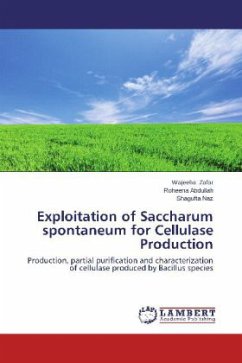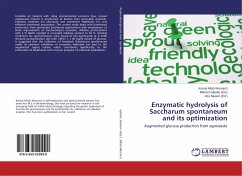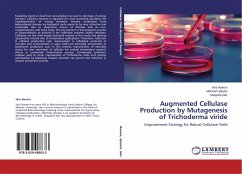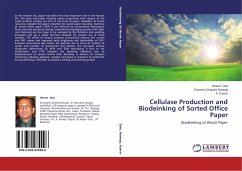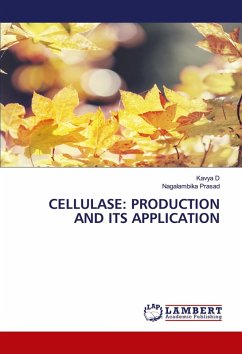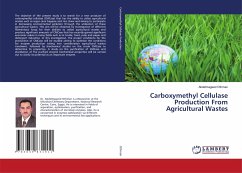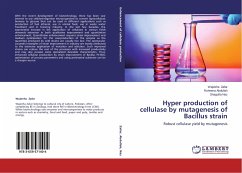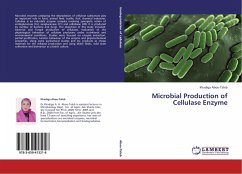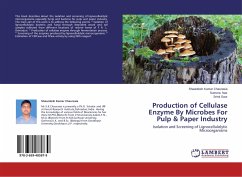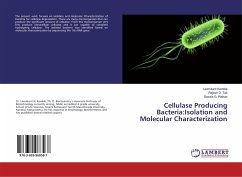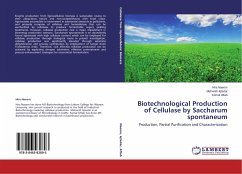
Biotechnological Production of Cellulase by Saccharum spontaneum
Production, Partial Purification and Characterization
Versandkostenfrei!
Versandfertig in 6-10 Tagen
41,99 €
inkl. MwSt.

PAYBACK Punkte
21 °P sammeln!
Enzyme production from lignocellulosic biomass is sustainable owing to their ubiquitious nature and non-competitivness with food crops. Agrowastes accumulate in envonment in substantial amounts as pollutants, and primarily comprise of cellulose and hemicellulose that can be saccharified by cellulases to produce fermentable sugars yielding bioethanol. However, cellulase production cost is major impediment in bioenergy production scenario. Saccharum spontaneum is an abundantly found agrowaste with high cellulose content which can be employed for cellulase production through biological route. In ...
Enzyme production from lignocellulosic biomass is sustainable owing to their ubiquitious nature and non-competitivness with food crops. Agrowastes accumulate in envonment in substantial amounts as pollutants, and primarily comprise of cellulose and hemicellulose that can be saccharified by cellulases to produce fermentable sugars yielding bioethanol. However, cellulase production cost is major impediment in bioenergy production scenario. Saccharum spontaneum is an abundantly found agrowaste with high cellulose content which can be employed for cellulase production through biological route. In present investigation, cellulase production was significantly elevated through substrate delignification and process optimization by employment of fungal strain Trichoderma viride. Therefore, cost effective cellulase production can be achieved by exploiting cheaper substrates, effective pretreatment and process enhancement strategies for economical fermentation.



